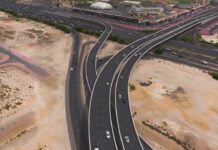by CW staff www.constructionweekonline.com
What is your reaction to the delay of 19 Dubai Metro stations on the Red Line?

Dr Sheriff Hashem, WSP Middle East Associate Director, answers I am not surprised at all. We’re talking about the largest fully automated driverless metro system in the world. I believe it was a totally sound decision by RTA to inaugurate the system on September 9 as planned, starting with 10 strategically located metro stations.
Scott Richards, ACW Holdings director of client services, answers A soft-launch is a practical solution for an ambitious project and given the scale of the Metro. The Septemper 9 decision to hold back 19 stations was an advisable decision. It does impact the usefulness of the Metro at this stage but it clearly helped Dubai to get some proverbial runs on the board locally and internationally.
Will you use the metro?
Dr Sheriff Hashem answers I certainly intend to use the long awaited metro system. It is a modern, reliable, safe, cost-effective and environmentally friendly mode of transportation. The extent of such use, however, will be affected by the ease of reaching metro station nodes from residences and business points.
Scott Richards answers Certainly. With the remaining stations open it provides a nice arterial reach to the malls and other regions of the emirate. I used the Metro on September 10 and it was one of those experiences in Dubai where they delivered expectations.
Do you think the Dubai Metro will be a success when it is fully completed?
Dr Sheriff Hashem answers A completed metro network covering Dubai will certainly encourage more commuters to go for public transportation in lieu of a car or taxi based transport solutions. Changing transportation habits, however, takes time; but the attractiveness and world-class operational service of Dubai Metro will accelerate the process.
Scott Richards answers Yes. The Red and Green lines will serve a lot of Dubai. I would say that the construction of the other lines are vital for the success of the newer regions of Dubai, particularly along Emirates Road, where the super-developments are being constructed.
Will it meet the infrastructure needs of the city?
Dr Sheriff Hashem answers Absolutely; after all, Dubai’s current and future map obviously needs a modern integrated mass transit system with a modern metro system in its core. A strong infrastructure serves as the backbone for the development and expansion of world-class cities.
Scott Richards answers It will contribute to the relief of congestion on the roads. The metro is just one part of a civic infrastructure, it offers a good-opportunity to make the workforce more mobile, and increase people’s choices as to where they live and work. It’s certainly a positive step towards the maturation of the city.
What more can the gulf do to improve its infrastructure?
Dr Sheriff Hashem answers In the context of the subject, I would think of activating the strategic GCC railway system programme that has been under consideration for quiet some time. Such internal systems could be complemented with a rail link uniting the six countries. This requires a huge investment, but the reward could be enormous.
Scott Richards answers The infrastructure here has evolved at a phenomenal rate. There are clearly concerns around things such as electricity, sewage and waste disposal. Civic infrastructure takes time, and the master-planned communities have come about before that was in place.
Because of the drop in traffic this year, is there still a big demand for road projects?
Dr Sheriff Hashem answers I believe the demand for road projects will continue, however with a new vision and strategy directing more funds and resources to strategic long-term projects, rather than primarily to urgent projects tackling traffic congestion at rush hours.
Scott Richards answers The road projects here can seem diabolical in their complexity and scale, but we have a road-capacity three times what we require for several reasons: access, growth and international drivers.



















